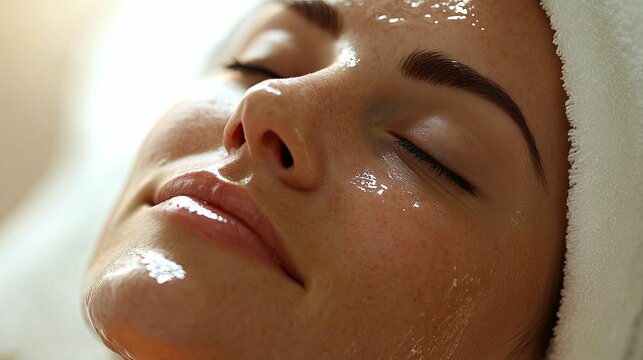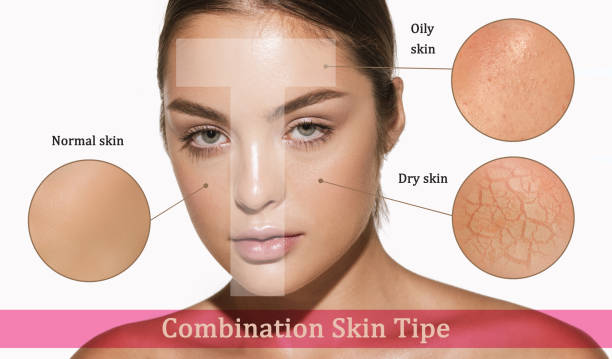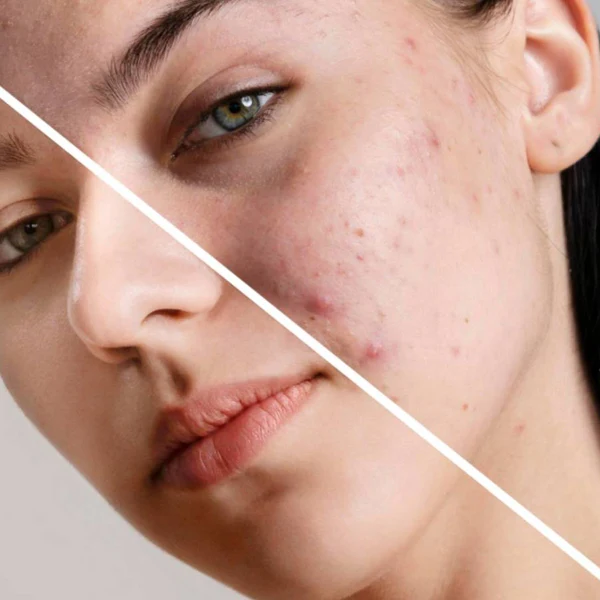Understanding Your Skin Type
Understanding your skin type is the first step to effective skincare. Learn more below!
Oily Skin
Oily skin produces excess sebum, often leading to a shiny appearance, especially in the T-zone (forehead, nose, and chin).
It is prone to:
- • Enlarged pores
- • Blackheads, pimples, and blemishes
Care Tips for Oily Skin:
- ✔ Wash your face no more than twice a day, and always after sweating.
- ✔ Use gentle cleansers and avoid scrubbing.
- ✔ Look for "noncomedogenic" products to prevent clogged pores.
- ✔ Avoid picking or popping pimples to reduce the risk of scarring.

Curious about the right products for different skin Types?
Learn how to care for each skin type with these essentials:

Dry Skin
Dry skin lacks moisture and often feels tight or rough, with visible fine lines and flakiness.
Causes of Dry Skin:
- • Genetics, aging, or hormonal changes
- • Weather conditions (wind, sun, or cold)
- • Long, hot showers or baths
- • Harsh soaps or skincare products
Care Tips for Dry Skin:
- ✔ Limit baths and showers to 10 minutes, using lukewarm water.
- ✔ Apply rich moisturizers immediately after bathing.
- ✔ Use mild soaps and avoid scrubbing.
- ✔ Use a humidifier to add moisture to indoor air.
Combination Skin
Combination skin features oily areas in the T-zone and dry or normal patches on the cheeks.
Care Tips for Combination Skin:
- ✔ Use products tailored to different areas of your face (e.g., oil-controlling products for the T-zone and hydrating products for dry areas).
- ✔ Exfoliate gently to prevent clogged pores in oily areas.
- ✔ Choose lightweight, noncomedogenic moisturizers.

Curious about the right products for different skin Types?
Learn how to care for each skin type with these essentials:
Sensitive Skin
Sensitive skin is easily irritated and reacts to environmental factors, products, or conditions.
Common symptoms include:
- • Redness
- • Itching or burning sensations
- • Dryness or inflammation
Care Tips for Sensitive Skin:
- ✔ Use hypoallergenic and fragrance-free skincare products.
- ✔ Identify and avoid triggers, such as specific products or environmental factors.
- ✔ Protect your skin with SPF and gentle moisturizers.

Normal Skin
Normal skin is balanced with minimal imperfections. It is smooth, radiant, and not prone to sensitivity.
Care Tips for Normal Skin:
- ✔ Maintain your skin’s natural balance with a simple routine.
- ✔ Use gentle cleansers and moisturizers.
- ✔ Apply sunscreen daily to protect against UV damage.

Curious about the right products for different skin Types?
Learn how to care for each skin type with these essentials:
3 Simple Methods to Determine Your Skin Type
1. Visual Inspection
Examine your skin in natural light for these signs:
- Oily Skin: Shiny T-zone and enlarged pores.
- Dry Skin: Flaky, tight, or rough patches.
- Combination Skin: Oily T-zone with drier cheeks.
- Sensitive Skin: Redness or irritation.
- Normal Skin: Smooth texture, consistent tone.
2. Blotting Paper Test
Press blotting paper on your face, especially in the T-zone. Observe the residue:
- Oily Skin: Excess oil on the paper.
- Dry Skin: Minimal to no oil.
- Combination Skin: Oil from the T-zone, none from cheeks.
- Normal Skin: Balanced, minimal oil.
3. Touch Test
Feel your skin’s texture with clean fingertips:
- Oily Skin: Slick or greasy, especially in the T-zone.
- Dry Skin: Tight, rough, or flaky.
- Combination Skin: Oily T-zone and dry cheeks.
- Sensitive Skin: Reacts with redness or irritation.
- Normal Skin: Smooth and neither too oily nor dry.
